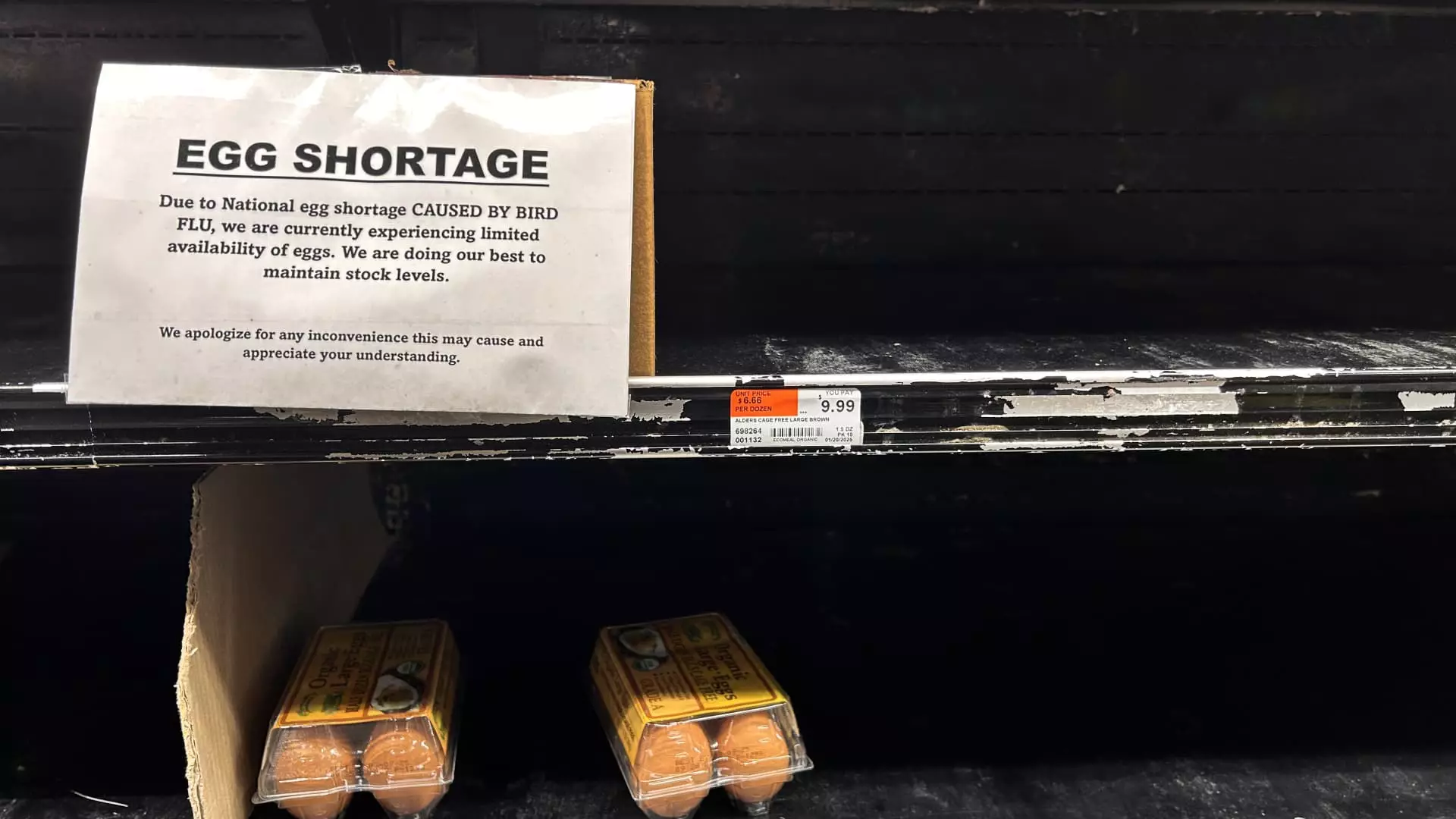In recent months, egg prices in the United States have surged to unprecedented heights, as the country grapples with a significant bird flu outbreak. This crisis is not just a blip on the radar; it has transformed the landscape of poultry farming and has left consumers facing steep price hikes at grocery stores. For instance, wholesale prices for large, white shell eggs have skyrocketed to an average of $8 per dozen, significantly surpassing last year’s record of $5.46 per dozen. This alarming trend raises questions about the future of egg prices and the broader implications for food affordability in America.
As of late 2024, the average retail cost of a dozen large, grade A eggs has climbed to approximately $4.15, showcasing a staggering 65% increase from just $2.51 in December 2023. While this figure is still shy of its all-time high of $4.82 recorded in January 2023, the trajectory suggests that consumers will soon face even larger bills at the register. This inflation in egg prices stands in stark contrast to the overall easing of inflation in other sectors, which has sowed anxiety among shoppers. Retailers, including popular chains like Trader Joe’s and Costco, have begun implementing purchase limits on eggs, highlighting the severity of the situation.
The situation has even prompted restaurants, such as the Waffle House, to charge patrons an extra 50 cents for each egg. Other eateries have followed suit, adjusting the prices of egg-based dishes in response to skyrocketing costs. This ripple effect underscores the widespread ramifications of egg inflation, affecting everything from households to dining establishments.
At the core of this price crisis is the resurgence of highly pathogenic avian influenza (HPAI), commonly referred to as bird flu. This infectious disease has led to the deaths of millions of chickens at commercial egg farms, leading to a drastic reduction in the supply of eggs. The disease’s highly contagious nature compels farmers to cull entire flocks if even a single case is detected, resulting in a loss of over 40 million egg-laying chickens in 2024 alone—around 13% of the national total.
The repercussions of this outbreak are particularly alarming, as inventories of shell eggs are estimated to be about 15% to 16% below the five-year average. These supply shortages have coincided with peak demand during the holiday season when egg-based recipes often dominate cooking trends, further squeezing available resources and driving up prices. Experts emphasize the severity of this situation, noting that wholesale prices have surged to three or four times their levels from just one year prior.
As wholesale prices continue to escalate, the extent to which these increases will translate into retail prices is expected to vary widely among different grocers. Large national retailers, such as Walmart and Aldi, possess greater flexibility to manage price increases thanks to their robust profit margins on various food products and their ability to secure fixed-price contracts for egg supplies. This allows them to buffer some of the cost fluctuations from wholesale rates, offering a semblance of stability to their customers.
Conversely, smaller, independent retailers lack the same scale of operations and must adjust prices more swiftly to maintain profitability on each sale. This disparity in operational capacity means that shoppers in different markets may experience highly variable prices for eggs as the crisis unfolds.
The ramifications of this egg price crisis extend beyond consumer pain at the checkout line. The drastic price increases illuminate a larger issue related to food security in the U.S. Rising food prices exacerbate existing inequalities, particularly affecting low-income households that may already struggle to afford basic necessities. The disparity in the impact of bird flu on different types of poultry also raises concerns about the resilience of the overall food supply chain.
As the bird flu outbreak continues to wreak havoc, the future remains uncertain. Recent data indicate that over 22 million egg-laying chickens have succumbed to the disease just in the early months of 2025. Meanwhile, while the impact has been somewhat less severe on broiler chicken farms—where chickens are raised for meat—there is still considerable cause for concern if the virus should begin to spread further.
The soaring prices of eggs due to bird flu have transformed the market, leaving consumers and businesses grappling with the fallout. The current crisis underscores the fragility of the food supply chain and signals a need for proactive measures to ensure that such outbreaks are managed more effectively in the future. As we brace ourselves for potential further price hikes, understanding the dynamics behind this significant inflationary moment is essential for consumers and policymakers alike.

